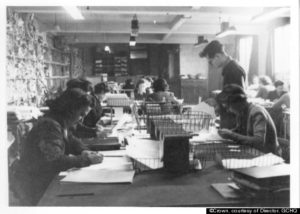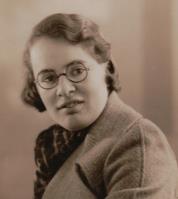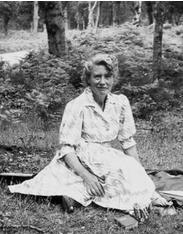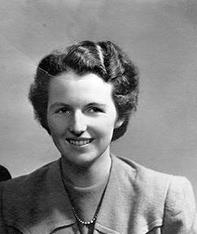 For years, the efforts of thousands of codebreakers working in small huts in the grounds of a large mansion somewhere in Buckinghamshire was kept as one of the biggest secrets of the Second World War. The most famous figure is the great Alan Turing. Without him, the ‘bombe’ machine would not exist and the Allies would have remained unable to read German Naval messages. Yet, it seems to have gone largely unnoticed that 80% of the 9,000 staff working at Bletchley Park were, in fact, women. These women were clever in their own right, and worked just as tirelessly to crack the German Enigma codes. It is believed that the efforts of both Alun Turing and these women helped to shorten the war by at least two years and saved millions of lives.
For years, the efforts of thousands of codebreakers working in small huts in the grounds of a large mansion somewhere in Buckinghamshire was kept as one of the biggest secrets of the Second World War. The most famous figure is the great Alan Turing. Without him, the ‘bombe’ machine would not exist and the Allies would have remained unable to read German Naval messages. Yet, it seems to have gone largely unnoticed that 80% of the 9,000 staff working at Bletchley Park were, in fact, women. These women were clever in their own right, and worked just as tirelessly to crack the German Enigma codes. It is believed that the efforts of both Alun Turing and these women helped to shorten the war by at least two years and saved millions of lives.
The story starts with eccentric lead male codebreaker Dillwyn “Dilly” Knox, who requested an all-female team to work with. These ladies would soon receive the nickname “Dilly’s girls”. It was this all-female team who would break the Abwher Engima Machine between October and December 1941 and give the Allies control over the German spy network in Britain. The Allies were now able to feed misinformation back to Germany on military movements, such as the attack on D-Day. Dilly Knox with his all-female team gave the Allies the military advantage and helped win the war.
Working at Bletchley Park was well-paid with food, accommodation and uniform provided. Most of the women hired were young and straight out of college or university. All were brilliant problem-solvers or mathematicians. The Bletchley Girls stayed with local families whilst at Bletchley, or slept in bunks within the small huts on the park grounds. Those who arrived at the large mansion in the middle of nowhere had little knowledge of what they were going to be doing and each person was made to sign the Official Secrets Act immediately upon arrival. The Act required all-out secrecy of what the girls were doing at Bletchley Park for the next thirty years. Secrecy would come to dictate their lives even during the war. It was not just family, friends and boyfriends kept in the dark, or lied to, but colleagues as well. Many women never knew what the women in the next hut just a few yards away were doing, and work was never discussed when the girls were off duty. The consequences of doing so cost them their jobs and endanger the whole operation. Many of the girls were grateful for the opportunity to be at Bletchley Park doing what they were doing and support the war effort.

Joan Clarke
Joan Clarke studied mathematics at Newnham College, Cambridge and had completed Part I & II of her Mathematics Tripos by 1939. She completed Part III in 1940. It was her Geometry supervisor, Gordon Welchman, who recruited her for the Government Code & Cipher School in June 1940. From there, Joan Clarke became one of the few recognised women codebreakers at Bletchley Park – and one of two women to hold leadership roles.

Margaret Rock
Margaret Rock was 36 years old when arrived at Bletchley Park on 15th April 1940, making her older than most of the girls recruited. She was a graduate mathematician and statistician, which made her an ideal recruit. It was towards the end of 1941 that Margaret broke the Abwehr Enigma machine code alongside her colleague, Mavis Lever. Margaret would publish Dear Code Breaker many years later. The book would give a unique insight into her daily life.

Mavis Lever
Mavis Lever worked for the Ministry of Economic Welfare at the Foreign Office after studying German Literature at the University College London. It was her logical thinking that got her noticed and in June 1940 she found herself at Bletchley Park.
It seems ironic that in a world where women were thought to be incapable, the codebreakers of Bletchley Park helped to end the war. Few of these women were formally recognised as cryptanalysts at the time, besides them working at the same level as their male peers. With the secrecy lifted in 1975, many women have been able to talk about their experiences. Sadly, though, it only seems to be recently that we are listening to these fascinating stories about the Bletchley Girls and their part in the war.
Bletchley Park itself is open to visitors all year round and well worth exploring!
-Claire Amundson
Junior Girl
Girl Museum Inc.

Check out the BBC show The Bletchley Circle! It’s fantastic!
I’ve made a whole project on her and thousands of other women. Please check it out. http://24416429.nhd.weebly.com/
Cool! Thanks for sharing, Madeleine!